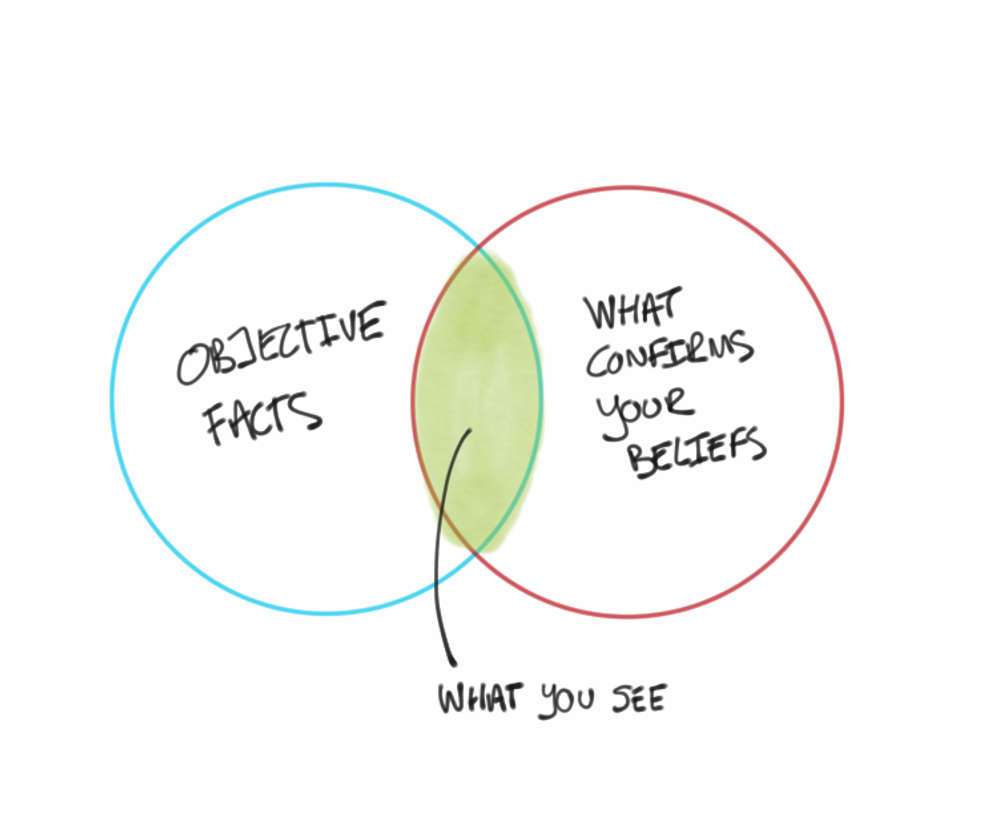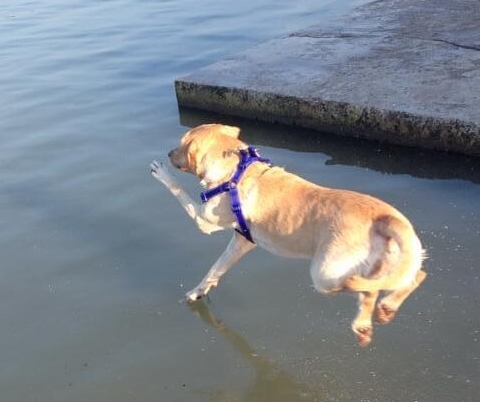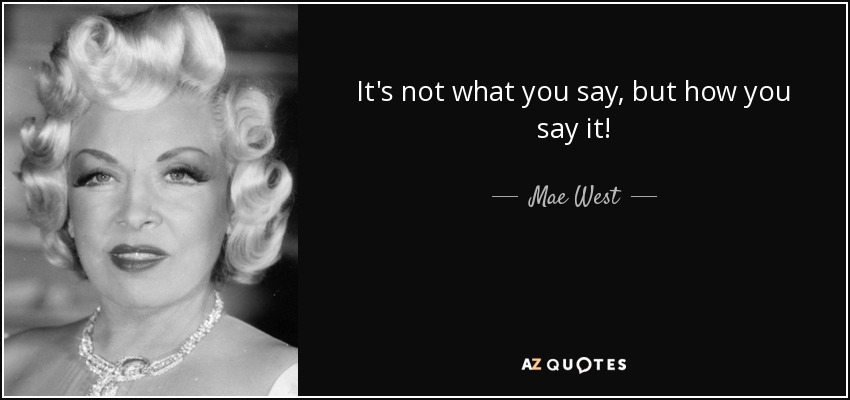The Art Of Persuasion The One Fundamental Principle
Create A Win-Win
The art of persuasion is based on the simple idea that you get what you want by enabling the other party to get what they want.

Setting The Scene For The Art Of Persuasion
This article is the first in a new series on the art of persuasion. The ideas and material that I will be sharing with you are based on my experiences of working as a professional salesman in the world of corporate sales.
This is absolutely not going to be about about me trying to sell you on the idea of sales training!
What we are going to look at are some of the core principles of communication and persuasion from that world, and reframing and applying them to everyday life both in and out of the workplace.
Why do you need to know these things?
How and why are they possibly relevant to you in your life now?
Because, as we noted in the introductory article to this new series:
- We are living in an age of unprecedented change, with far greater globalisation, connection and interdependence than at any other age in human history.
- Your capacity and capability to survive and succeed in this environment is based on your responsiveness to change, and your ability to communicate and persuade.
Being a nice friendly person with good inter-personal skills may be a good start but it is not enough.
This is not about being brash and over-bearing and trying to force people to do what you want them to do, and this is definitely not about trying to manipulate people or rip them off!
Success in the art of persuasion is not a zero-sum game, where for me to win you have to lose.
The One Fundamental Principle
There is one fundamental principle that should always be your number one priority if you really want to succeed in the art of persuasion and that is the principle of the “Win-Win”.
The art of persuasion is based on the simple idea that you get what you want by enabling the other party to get what they want.
Most people ignore this principle, and in so doing reduce their chances of success by at least 50% because they try to argue or force their point upon the other person.
Its Not What You Say But How You Say It
As the person initiating the persuasion, your success is grounded in how you speak far more than in the content of what you say.
Successful persuasion occurs when both parties are willing and eager participants in the persuasion process because they both get a lot from it!
For this to happen you, as the persuader, need to exercise the skills that will enable this to happen.
The Art Of Persuasion - Identifying And Satisfying The Other Person's Need

The basis of successful persuasion is all to do with identifying and satisfying a need that the other person has. The skill lies in:
- Knowing how to uncover that need
- Doing so in such a way that the other person is equally aware of their need
- Is happy for you to satisfy it!
Why does anybody buy into anything?
Why do people buy into anything; why do they show acceptance of and a willingness to actively support and participate in anything?
Is it all about a logical reasonable process of weighing the pros and cons?
People will rationalise their decision in all sorts of ways and provide arguments and reasons that "prove" it was a good idea and the right call.
But fundamentally people buy into things for emotional reasons and this can be distilled into one of 2 main reasons:
- AVERSION: Fear – they buy into something which removes a problem and makes them feel safe
- ASPIRATION: Opportunity – they buy into something to take advantage of a situation or to make a gain
The art of persuasion is based on the skillful use of questions
Used subtly, courteously and appropriately, questions reveal needs, aspirations and problems etc.
Also, the skilful and appropriate use of questions enables you to control the flow of a conversation or meeting.
Basically, there are two types of questions:
- OPEN QUESTIONS: that encourage people to freely reveal information and usually start with how… what… where...when… why…?
- CLOSED QUESTIONS: can help get very specific information and direct a person’s response in a specific direction. They will invariably elicit a specific response of yes or no.
The 3 phases to building a shared perception of the other person's need
Common sense
suggests that you cannot just wade into a conversation or discussion with someone with a list of questions and
fire them off and expect answers.
You have to move through a series of steps or phases, which make the other person feel comfortable with you so that they are engaged in the conversation and see a point and purpose to your questions.
The other key point to be aware of is that you and the other person are entering this conversation or discussion with very different agendas and expectations.
As you progress through each phase of the meeting or discussion you are aiming to ensure that at the end of each phase the other person and you have a shared perception.
The 3 steps or phases are known as:
-
ORIENTING - SETTING THE SCENE: you provide and exchange some high-level information, sufficient to keep the conversation moving along on the broad area of your proposal [but no detail at this stage]
-
ANALYSING - UNCOVERING NEEDS AND REQUIREMENTS: uncovering specific information
about the other person's needs and requirements that you know your proposal can meet [this will form the basis of the win-win]
-
DEVELOPING - GAINING BUYIN TO YOUR PROPOSAL: building a shared perception of
the other person's needs and how you
can satisfy them with your proposal thus creating a win-win
In the next article we are going to look in more depth at how you do all of this and we give examples based on real life situations.
We will outline simple but powerful processes to ensure that both party's needs are met, culminating in a mutually beneficial win-win.
Key Communication Concepts
Here are a few key basic terms and concepts that you need to be aware of and that will make you more effective in your communication and persuasion: Positioning statement
This is a clear and precise statement that focuses the other person's mind
when you introduce your idea or suggestion.
You don't use this until you have identified a need that the other person has and that you both recognise.
You could think of this as your "elevator pitch" - except that you don't just blurt it out as soon as meet the other person. You will do yourself a big favour if you give this some thought before you speak to the other person. Feature A feature is a description of your idea or proposal what it is and how it works. But always remember that a feature tells the other person about the idea or proposal it does not explain the benefits. e.g "that holiday house on Airbnb has a big field attached to the property" It is a common mistake to rush into describing the features of your idea or proposal too early in the process and before you and the other person have a shared understanding of that person's need or requirement.
It is also a mistake to assume that the other person will automatically see the benefit - chances are they probably won't. Benefit A benefit is a brief explanation of what a feature of your idea or suggestion can do for the other person - i.e. how it meets their need, how they stand to gain. e.g. "that holiday house on AirBnB has a big field attached to the property - which will be great for your dogs to run around in while we are relaxing and enjoying a glass of wine before dinner..." But, as above, you can only discuss this when you and the other person have a shared understanding of that person's need or requirement.
So, dont raise your pitch about the property on Airbnb until you have identified that the other person is in need of a few days break and until they have confirmed that they have that need.
Most times, most people overlook this when they are trying to persuade someone. Impression Management You should always be aware of and consciously manage the impressions that the other person is receiving about you. Think of this as your personal PR campaign. This is about how you are making the other person feel - remember what we said about this above in the basics of one to one communication. Always remember that people buy into your ideas, proposals and suggestions for emotional reasons. So always give careful thought to the impressions you are going to create - and especially in the early stages of your discussion with the other person. Expectation Management This is closely related to impression management – but is specifically to do with the delivery, implementation and follow-through on your idea, suggestion or proposal. This another area where most people fail badly. Once the other person has bought into and commited to go ahead, you should pay close and careful attention to keeping them informed and up-to-date with all aspects of the follow-through.
This includes good news, bad news and no news situations. Most people wrongly assume that the other person will only want to hear from them right at the "point of delivery". People have a need to kept informed at all stages of the implementation process for 2 reasons:
The result was that within a short space of time council engineers were on site and the remedial work was undertaken very quickly!
Free Download
The Art Of Persuasion 1 - Summary Notes
Persuasion
[1] The Art Of Persuasion The One Fundamental Principle - Create A Win-Win
[2] The Art Of Persuasion Advanced Communication Skills - Gaining BuyIn
[3] The Art Of Persuasion Planning For Success - Here's How To Do It!
Change
Getting From A to B Is Not Aways A Straight Line
Group Culture - The Invisible Software That Rules Your Life
Change Questions To Change Your Outcomes
Communication
How To Influence without Authority - 6 Key Tips
Return from "The Art Of Persuasion The One Fundamental Principle" to: Communication Persuasion and Change
Or to: Walking The Talk
- What if everything we think…
LATEST ARTICLES
The Power Of Patience - Why You Need The World's Toughest Quality
 Nothing in the world can take the place of patience. Patience and persistence are omnipotent. In everyday life, patience is often overshadowed by the desire for immediate results. We live in an era of…
Nothing in the world can take the place of patience. Patience and persistence are omnipotent. In everyday life, patience is often overshadowed by the desire for immediate results. We live in an era of…Demonizing The Other and Personal Acts Of Compassion
 What Does Demonizing The Other Mean? Demonizing the other refers to the act of portraying a group of people or an individual as inherently evil, threatening, or inferior. It often serves to justify di…
What Does Demonizing The Other Mean? Demonizing the other refers to the act of portraying a group of people or an individual as inherently evil, threatening, or inferior. It often serves to justify di…Why You Should Embrace Anomalies - The Incredible Value Of Disconfirming Evidence
 Is Your Desire To Be Right Greater Than Your Desire To Have Been Right? An anomaly is a deviation from what is expected or commonly regarded as the norm. It often appears as an unexpected observation…
Is Your Desire To Be Right Greater Than Your Desire To Have Been Right? An anomaly is a deviation from what is expected or commonly regarded as the norm. It often appears as an unexpected observation…Amazing Grace - The Majesty And The Mercy of Freedom From Your Pain
 "I once was lost, but now I am found, was blind, but now I see." The hymn and popular song "Amazing Grace" was written 250 years ago by John Newton, a former slave trader who in 1748 nearly died in a…
"I once was lost, but now I am found, was blind, but now I see." The hymn and popular song "Amazing Grace" was written 250 years ago by John Newton, a former slave trader who in 1748 nearly died in a…The Transformative Power Of Acceptance
 Experience The Power Of Acceptance. This website contains about 500,000 words. You could read every single word and it wouldn't make any real difference to you. You might become better informed, but t…
Experience The Power Of Acceptance. This website contains about 500,000 words. You could read every single word and it wouldn't make any real difference to you. You might become better informed, but t…Inversion - The Power Of Opposite Thinking
 How To Avoid The Unwanted Outcome. The power of opposite thinking, also known as inversion, lies in its ability to stimulate creativity, enhance problem-solving, and provide a fresh perspective on cha…
How To Avoid The Unwanted Outcome. The power of opposite thinking, also known as inversion, lies in its ability to stimulate creativity, enhance problem-solving, and provide a fresh perspective on cha…Are You Aligned With Reality? Or Do You See What You Believe?
 We tend to see that which aligns with what we believe, and to act upon that rather than acting on reality. Being aligned with reality starts with a clear and accurate understanding of the world. It me…
We tend to see that which aligns with what we believe, and to act upon that rather than acting on reality. Being aligned with reality starts with a clear and accurate understanding of the world. It me…The Law Of Response and Outcome
 A New Approach To A New Life At time of writing we are entering a new year which is traditionally a time of making resolutions to change our behaviour and improve the quality of our lives. And yet pow…
A New Approach To A New Life At time of writing we are entering a new year which is traditionally a time of making resolutions to change our behaviour and improve the quality of our lives. And yet pow…Clear Thinking - Turning Ordinary Moments Into Extraordinary Results
 There are two ways to handle the world - try to predict, or try to prepare. "Clear Thinking" by Shane Parrish, published in Oct 2023, is a laudable testament to the art of cogent thinking, and will be…
There are two ways to handle the world - try to predict, or try to prepare. "Clear Thinking" by Shane Parrish, published in Oct 2023, is a laudable testament to the art of cogent thinking, and will be…Self Dialogue - Working With Your Many Selves
 Self Dialogue Is About Working With ALL Levels Of Your Mind. The key to effective self dialogue is to have tools, techniques and resources that work with all levels of your mind. This simple self-faci…
Self Dialogue Is About Working With ALL Levels Of Your Mind. The key to effective self dialogue is to have tools, techniques and resources that work with all levels of your mind. This simple self-faci…The Balanced Brain - The Ultimate Route To Personal Transformation
 How To Experience The Benefits Of A Balanced Brain. Underpinning all of the belief systems and practices that offer routes to personal change, transformation and spiritual growth is the balanced brain…
How To Experience The Benefits Of A Balanced Brain. Underpinning all of the belief systems and practices that offer routes to personal change, transformation and spiritual growth is the balanced brain…How To Make Better Decisions - By Avoiding The Narrative Trap
 To Understand The Truth We Have To See The Whole Picture. One of the best ways to make better decisions is to have a deeper understanding of the many things that might stop that happening. To understa…
To Understand The Truth We Have To See The Whole Picture. One of the best ways to make better decisions is to have a deeper understanding of the many things that might stop that happening. To understa…The Greatest Love - The Most Important Relationship You Will Ever Have
 Yet Most Will Never Know It Everyone of us has a place, in our hearts there's a space, that is home to the greatest love of all. This love transcends everything we think we know about the world of for…
Yet Most Will Never Know It Everyone of us has a place, in our hearts there's a space, that is home to the greatest love of all. This love transcends everything we think we know about the world of for…Everything Is Connected And Why You Don't Feel It
 ...And Why It Matters
As human beings we are skating on very thin ice with our sense of self and certainty about "how things are" and what we like to think of as reality:
...And Why It Matters
As human beings we are skating on very thin ice with our sense of self and certainty about "how things are" and what we like to think of as reality:
Who Is In Charge Of Your Brain?
 How Not To Be Stupid. Who is in charge of your brain? This is not a silly questions. It matters because the outcomes that you experience in your life are determined by how you respond to the events th…
How Not To Be Stupid. Who is in charge of your brain? This is not a silly questions. It matters because the outcomes that you experience in your life are determined by how you respond to the events th…How To Be A Winner On A Very Large Scale
 The Incredible Benefits Of Selective Attention. This is not a typical article about how to be a winner. We are not going to talk about goal setting, the importance of habits, the power of focus and al…
The Incredible Benefits Of Selective Attention. This is not a typical article about how to be a winner. We are not going to talk about goal setting, the importance of habits, the power of focus and al…The Metagame Approach To Life
 How To Achieve Your Biggest Objectives.
The metagame approach to life is all about winning and achieving your biggest objectives by:
- Understanding the bigger picture
How To Achieve Your Biggest Objectives.
The metagame approach to life is all about winning and achieving your biggest objectives by:
- Understanding the bigger picture
- Being better by doing things d…Shantideva - The Way Of The Bodhisattva
 Walking The Path Of Compassion. Shantideva the 8th century Indian Buddhist sage is famous for his treatise "The Way of the Bodhisattva" delivered as an extended teaching to the monks of Nalanda monast…
Walking The Path Of Compassion. Shantideva the 8th century Indian Buddhist sage is famous for his treatise "The Way of the Bodhisattva" delivered as an extended teaching to the monks of Nalanda monast…Reframing History - Deconstruction And Discussion Not Destruction
 History is always about context, not imposing our own moral values on the past. For those of us fortunate enough to live within western democracies, we are living in an age where a vociferous and into…
History is always about context, not imposing our own moral values on the past. For those of us fortunate enough to live within western democracies, we are living in an age where a vociferous and into…Tao Te Ching - Connecting To Your True Source Of Power.
 How To Be Lived By The Tao. The Tao Te Ching is one of those books that many people read, few understand, and even fewer put into practice. The only way to know the Tao is to experience it, and it is…
How To Be Lived By The Tao. The Tao Te Ching is one of those books that many people read, few understand, and even fewer put into practice. The only way to know the Tao is to experience it, and it is…How Things Really Are - The Inbuilt Design Flaws
 Chaos, Disorder And Decay Is The Natural Order Of Things. Nobody has the perfect life. We all struggle and strive to attain health, wealth and personal happiness. Yet these three big areas: our health…
Chaos, Disorder And Decay Is The Natural Order Of Things. Nobody has the perfect life. We all struggle and strive to attain health, wealth and personal happiness. Yet these three big areas: our health…Intuition Or Anxiety - Are There Angels Or Devils Crawling Here?
 How To Tell The Difference Between Intuition and Anxiety. How do you know whether the voice of your intuition is real or just the product of your inner anxiety? Several months ago I was having a drink…
How To Tell The Difference Between Intuition and Anxiety. How do you know whether the voice of your intuition is real or just the product of your inner anxiety? Several months ago I was having a drink…What Is Truth - How To Tell A Partial Truth From The Whole Truth?
 How the truth and nothing but the truth is often not the whole truth. My great aunty Flo broke her arm and died. It is true that she broke her arm in 1923. It is also true that she died in 1949. But t…
How the truth and nothing but the truth is often not the whole truth. My great aunty Flo broke her arm and died. It is true that she broke her arm in 1923. It is also true that she died in 1949. But t…Duality And Life Beyond Your Thinking Mind
 Duality and life beyond your thinking mind focuses on the limitations of time, foreground and background, duality and "stuckness". The first aspect of duality and life beyond your thinking mind focuse…
Duality and life beyond your thinking mind focuses on the limitations of time, foreground and background, duality and "stuckness". The first aspect of duality and life beyond your thinking mind focuse…The Conscious Mind Is Limited - Be Aware And Be Prepared
 Being aware is the first stage of being prepared. The conscious mind is limited in so many ways. There are some who would argue that there is no such thing as conscious thought and that it is represen…
Being aware is the first stage of being prepared. The conscious mind is limited in so many ways. There are some who would argue that there is no such thing as conscious thought and that it is represen…Your Inner Map Of Reality - Here's Why You Think The Way You Do
 The big picture of how your inner map of reality creates your feelings, thoughts, and behaviours. Your inner map of reality is based on the filters of your own ethnic, national, social, family and rel…
The big picture of how your inner map of reality creates your feelings, thoughts, and behaviours. Your inner map of reality is based on the filters of your own ethnic, national, social, family and rel…The Failure Of Cancel Culture - Suppression Not Engagement
 Why we need to wear our beliefs lightly and develop negative capability. Throughout history people have campaigned to fight beliefs, ideologies, and injustices that they perceived to be oppressive, di…
Why we need to wear our beliefs lightly and develop negative capability. Throughout history people have campaigned to fight beliefs, ideologies, and injustices that they perceived to be oppressive, di…4 Big Reasons Why We Get Stuck In Our Attempts At Personal Change
 Most People Spend Their Entire Life Imprisoned Within The Confines Of Their Own Thoughts. This first of the 4 big reasons why we get stuck is, in my view, the most important. The "self-help industry…
Most People Spend Their Entire Life Imprisoned Within The Confines Of Their Own Thoughts. This first of the 4 big reasons why we get stuck is, in my view, the most important. The "self-help industry…How Do I Change And Why Is It So Hard?
 We Would Rather Die Than Change, And We Usually Do In my experience, the vast majority of people who say they want to change don’t change. Most people reading this won’t change because they don’t real…
We Would Rather Die Than Change, And We Usually Do In my experience, the vast majority of people who say they want to change don’t change. Most people reading this won’t change because they don’t real…The Illusion Of A Separate Self - Windows 11 With Self Awareness!
 Beyond the content of your mind you are so much more than you think you are. When we talk of "myself" this is the conventional way of referring to our self image which is in fact the ego's constructio…
Beyond the content of your mind you are so much more than you think you are. When we talk of "myself" this is the conventional way of referring to our self image which is in fact the ego's constructio…



